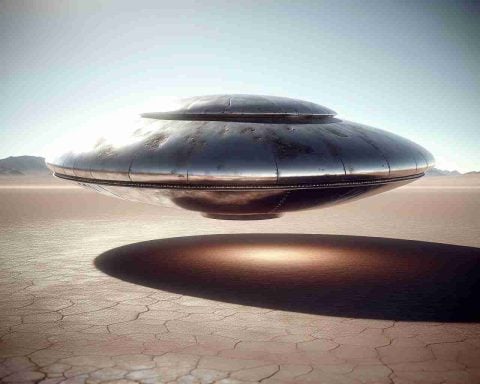- NASA has selected SpaceX to launch the Pandora spacecraft in September as part of the Astrophysics Pioneers program.
- Pandora features a 45-centimeter telescope and advanced detectors to study the atmospheres of 20 exoplanet-hosting stars.
- The mission will use transmission spectroscopy to analyze spectral signatures for signs of water or hydrogen in exoplanet atmospheres.
- Understanding the variability of stars is crucial, as these factors can influence the readings of exoplanet atmospheres.
- The spacecraft aims for a sun-synchronous orbit and will likely launch on SpaceX’s Transporter series.
- Pandora has the potential to significantly enhance our knowledge of distant worlds and their atmospheres.
NASA has made waves by choosing SpaceX to launch the groundbreaking Pandora spacecraft, targeting a launch window as early as September. This thrilling mission is part of NASA’s Astrophysics Pioneers program, which focuses on innovative, budget-friendly small satellite ventures.
Pandora is no ordinary smallsat. Equipped with a powerful 45-centimeter telescope and advanced optical and infrared detectors, this mission aims to explore the atmospheres of 20 stars known to host exoplanets over the course of one year. The primary aim? To uncover the mysteries of these distant worlds through a technique called transmission spectroscopy.
A key challenge Pandora will tackle is discerning whether certain spectral signatures in exoplanet atmospheres are linked to the presence of water or hydrogen, or if they stem from the variability of the stars themselves. As one scientist involved in the project aptly noted, “Stars are not uniform,” highlighting Pandora’s role in shining a light on this complex interplay.
The spacecraft, weighing up to 320 kilograms, is primed for a sun-synchronous orbit, likely aboard SpaceX’s renowned Transporter series. Although NASA remains tight-lipped about the launch contract’s value, the mission itself holds immense potential for enhancing our understanding of the universe.
As we gear up for September, the excitement builds. With Pandora set to break new ground in exoplanet research, curiosity and anticipation fill the air. Watch out—this mission could revolutionize how we view distant worlds.
Key takeaway: NASA’s Pandora mission could be a game-changer in understanding the atmospheres of exoplanets and the stars that orbit them.
A New Era of Exoplanet Exploration: NASA’s Pandora Mission with SpaceX
NASA’s Pandora mission promises to be a significant leap forward in our understanding of exoplanets and their atmospheres. With its advanced technology and ambitious goals, this mission is expected to yield crucial insights into the secrets of distant worlds. Below, we explore additional relevant information about this groundbreaking project and address some of the most pressing questions surrounding it.
Pros and Cons of the Pandora Mission
Pros:
– Innovative Technology: Utilizing a state-of-the-art 45-centimeter telescope and sophisticated detectors, Pandora is well-equipped to analyze exoplanet atmospheres.
– Cost-Effective Approach: As part of NASA’s Astrophysics Pioneers program, Pandora exemplifies a budget-friendly approach to space exploration, making advanced research more accessible.
– High Potential Impact: The mission aims to significantly deepen our understanding of exoplanet atmospheres, potentially uncovering signs of water and other essential molecules.
Cons:
– Complexity of Measurements: Distinguishing spectral signals from exoplanets versus stellar variability presents a significant challenge.
– Short Mission Duration: The one-year timeline may limit the amount of data collected, which may not capture longer-term atmospheric changes.
– Dependence on Launch Timelines: Any delays in the SpaceX launch schedule may impact the planned research timeline.
Market Forecast and Trends
The Pandora mission reflects a growing trend towards small satellite technology in astrophysics. As larger missions often face budget overruns and extensive timelines, more organizations are investing in cost-effective, smaller missions like Pandora. This could lead to increased collaboration within the aerospace sector, involving private companies like SpaceX, which is likely to continue driving innovation in space exploration.
Security and Sustainability Aspects
Pandora’s mission design emphasizes sustainability through its focus on cost management and efficient use of resources. The spacecraft’s relatively lightweight and smaller scale allow for potentially less environmental impact compared to larger missions. Additionally, the findings from Pandora may provide valuable information regarding extraterrestrial environments, which could inform future missions and the search for life beyond Earth.
Frequently Asked Questions
1. What is the primary goal of the Pandora mission?
The primary goal of the Pandora mission is to analyze the atmospheres of 20 exoplanet-hosting stars using a technique called transmission spectroscopy, aiming to identify the presence of crucial molecules such as water and hydrogen.
2. How does the Pandora spacecraft achieve its objective?
Pandora will utilize a 45-centimeter telescope along with advanced optical and infrared detectors to capture spectral information from the atmospheres of exoplanets orbiting their stars.
3. When is the expected launch date for Pandora?
NASA is targeting a launch window as early as September, but the exact date will depend on various factors, including SpaceX’s launch schedules and any potential delays.
For further insights into the Pandora mission and NASA’s efforts in space exploration, visit the official NASA website: NASA.




















